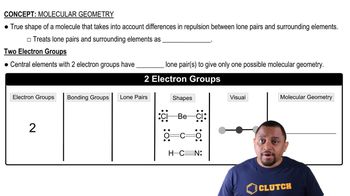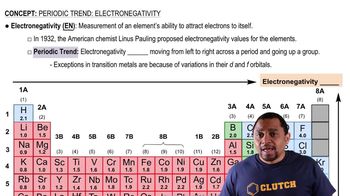Textbook Question
CH3F is a polar molecule, even though the tetrahedral geometry often leads to nonpolar molecules. Explain.
4481
views
 Tro 4th Edition
Tro 4th Edition Ch.10 - Chemical Bonding II: Molecular Shapes & Valence Bond Theory
Ch.10 - Chemical Bonding II: Molecular Shapes & Valence Bond Theory Problem 52
Problem 52



CH3F is a polar molecule, even though the tetrahedral geometry often leads to nonpolar molecules. Explain.
Determine whether each molecule in Exercise 35 is polar or nonpolar. a. PF3 b. SBr2 c. CHCl3 d. CS2
Determine whether each molecule in Exercise 36 is polar or nonpolar. a. CF4 b. NF3 c. OF2 d. H2S
The valence electron configurations of several atoms are shown here. How many bonds can each atom make without hybridization? a. Be 2s2
The valence electron configurations of several atoms are shown here. How many bonds can each atom make without hybridization? b. P 3s23p3
The valence electron configurations of several atoms are shown here. How many bonds can each atom make without hybridization? c. F 2s22p5